In the autumn of 2019, I did a one-month solo trip to South Korea and Japan, I will make a series of posts describing city by city how it was travelling in these countries.
First I went to Seoul, I visited for 5 days before going to Tokyo and visiting and volunteering in Japan for one month. I was positively impressed by Seoul and Korean people, I’m still in contact with people I knew in those days. I have good memories of the places I visited and from the Korean culture.
South Korea is a vibrant and dynamic country located in East Asia. It is famous for its rich cultural heritage, including traditional music, dance, cuisine, and K-Pop. The country's cuisine, such as kimchi, bulgogi, and bibimbap, is celebrated worldwide for its unique flavours and healthy ingredients.
Seoul, the capital city of South Korea, is a bustling metropolis that seamlessly blends modernity with tradition. As one of the largest cities in the world, Seoul is a hub of culture, commerce, and technology. Towering skyscrapers dominate the skyline, alongside ancient palaces, temples, and historic neighbourhoods.
The city's dynamic energy is palpable in its bustling streets, lively markets, and nightlife scene. From the trendy districts of Gangnam and Hongdae to the historic sites of Gyeongbokgung Palace and Bukchon Hanok Village, Seoul offers a diverse array of experiences to explore.
On that trip, I mostly used Couchsurfing to find accommodation and meet people. My flight landed at 6 am in Incheon. I thought that I would be able to arrive at Seguen's place, my host in Seoul, before he left for work, but between the passport check and the traffic jam, I couldn’t make it so he just left me the address and the code to enter at his place, telling me to take a rest, visit the neighbours and see each other in the evening. This is how I first faced how Korean people are welcoming and friendly.
On the first day, I slept a lot but still got to visit Gangnam, the area where Seguen was living, in the evening we met and had dinner together and got to know each other.
On the second day, I started visiting Changdeokgung Palace, a UNESCO World Heritage Site renowned for its stunning architecture, picturesque gardens, and rich history. Built during the Joseon Dynasty in the 15th century, it served as the primary royal residence for many Korean kings.
The palace complex is characterized by its harmonious integration with the natural landscape, featuring lush gardens, ponds, and pavilions. Notable attractions within Changdeokgung include the Secret Garden (Huwon), a tranquil retreat for the royal family, and the Injeongjeon Hall, where important state affairs were conducted.
Changdeokgung Palace was an immersion in Korea's royal history, exploring the various halls, gates, and courtyards adorned with intricate architectural details and vibrant colours, it was what I was waiting to see the most in Asia, it was my first time there.
The next place I went was the largest and oldest market in Korea, located next to the "Great South Gate", Namdaemun.
Namdaemun Market dates back to the Joseon Dynasty, the market is a bustling hub of activity where you can immerse in the vibrant sights, sounds, and flavours of Korean culture.
Spanning over 4 hectares (10 acres), Namdaemun Market offers a vast array of goods, including clothing, accessories, souvenirs, electronics, and traditional Korean foods. Wandering through the narrow alleyways lined with colourful stalls and shops, it was like being, finally, in the video or pictures I saw and I wanted to experience myself.
One of the highlights of Namdaemun Market is its diverse culinary offerings, with countless street food vendors serving up delicious Korean snacks and dishes, I had a Bibimbap for lunch.
After the market, I didn’t know where to go, so I checked on Google Maps what was near me, and I decided to go to Dongdaemun Design Plaza (DDP) a futuristic landmark, designed by Zaha Hadid, a hub for design, culture, and innovation. Its distinctive avant-garde architecture, characterized by curvilinear forms and sleek surfaces, has made it a symbol of modernity and creativity in Seoul's skyline.
The plaza serves as a multipurpose cultural complex, hosting exhibitions, conferences, fashion shows, and various other events that celebrate design in all its forms. What I didn't know, when I decided to go there, is that in those days there was the Seoul Fashion Week.
At the beginning, I didn't know what was happening. There were a lot of people, some of them dressed fashionably. After a while I realized where I was, I had my camera and people were there posing for everyone so I took some pictures. I stayed there for some hours because at one point some famous people (that I didn't recognize) were arriving and I liked the atmosphere. In Japan, people told me that South Koreans are known as the most fashionable people in Asia, the Italians of Asia.
The day after I decided to visit one of the most tourist places in Seoul, Bukchon Hanok Village, a charming neighbourhood renowned for its well-preserved traditional Korean houses known as Hanoks. Dating back to the Joseon Dynasty, these historic homes line the narrow winding alleyways of Bukchon, creating a picturesque scene that transports you back in time.
I strolled through the quaint streets, admiring the intricate architectural details of the Hanoks, the curved tiled roofs, wooden lattice windows, and stone foundations. Many of these Hanoks have been converted into cultural centres, museums, galleries, and guesthouses.
In addition to its historic homes, Bukchon Hanok Village offers stunning views of Seoul's modern skyline juxtaposed against the backdrop of the surrounding mountains. Walking on these small streets is like doing a leap in the past during the Joseon dynasty, it deserves a visit even if it can be crowded with tourists and taking a picture can be problematic.
When I left Bukchon I met up with a guy from Lithuania, unfortunately, I don’t remember his name, he had lived for a long time in Seoul, and he proposed to me to go to see the N Tower.
The N Tower or Namsan Tower, is an iconic landmark perched atop Namsan Mountain in the heart of Seoul. Standing at a height of 236 meters, the tower offers panoramic views of the sprawling cityscape below.
Originally built as a broadcasting tower in 1969, N Tower has since become a symbol of the city's modernity and prosperity.
In addition to its observation decks, N Tower boasts a range of attractions and amenities, including restaurants, cafes, gift shops, and even a digital observatory where visitors can take virtual tours of famous landmarks around the world. The tower's romantic ambience makes it a popular spot for couples, who often visit to attach love locks to its fences as a symbol of affection.
After we had lunch together in a place he knew, where an old lady was preparing several different types of soup, it was very cheap and delicious. Unfortunately, we didn’t keep in touch after this.
Before going to dinner with Seguen I went to visit Bongeunsa Temple, founded in the 8th century during the Silla Dynasty, the temple has a rich history and is one of the city's most significant cultural and spiritual landmarks.
Situated amidst the modern skyscrapers of the Gangnam district, Bongeunsa offers a peaceful retreat from the hustle and bustle of urban life. The temple's tranquil grounds feature lush gardens, serene courtyards, and ornate pagodas, creating a serene atmosphere.
One of the highlights of Bongeunsa is the towering statue of Maitreya Buddha, which stands over 20 meters tall and is one of the largest of its kind in Asia.
While I was there I had the opportunity to see a daily meditation ritual where monks were playing the Beopgo (Dharma drum) and the Unpan (Cloud gong), it is usually done in the morning and the evening. A beautiful experience!
The day after I went to Gyeongbokgung Palace, also known as the "Palace of Shining Happiness," a magnificent historical site built in 1395 during the Joseon Dynasty. It was the main royal palace and was the largest of the Five Grand Palaces constructed in the capital.
The palace complex is an architectural masterpiece, featuring ornate gates, grand halls, and beautifully landscaped gardens spread across its expansive grounds. Notable structures within Gyeongbokgung include the Geunjeongjeon Hall, where important state affairs were conducted, the Gyeonghoeru Pavilion, an elegant banquet hall set amidst a tranquil pond, and the Gyeongbokgung Palace Museum, which houses a vast collection of artefacts and treasures from Korea's royal past.
Despite suffering extensive damage during the Japanese occupation in the early 20th century, Gyeongbokgung Palace has been meticulously restored to its former glory, preserving its status as a symbol of Korea's rich cultural heritage.
In the afternoon I met with my friend Jeeyoun, and we visited Jogyesa Temple, a vibrant and culturally significant Buddhist temple. Founded in 1395 during the early Joseon Dynasty, it has served as the chief temple of the Jogye Order, the largest Buddhist sect in Korea.
Situated amidst the bustling city streets, Jogyesa offers a tranquil oasis of spirituality and serenity. The temple's colourful architecture, adorned with intricate carvings and traditional rooflines, creates a striking contrast against the modern skyline of Seoul.
One of the highlights of Jogyesa is the towering Daeungjeon Hall, the main worship hall, which houses a magnificent golden statue of Buddha. Before having a stroll together and drinking a coffee, Jeeyoun offered me to enter here and assist in a prayer session, it was the first time I assisted to something like that, and I still remember it.
That afternoon with Jeeyoun was very nice, she is a friendly and chatty person, and we talked about everything, she explained to me a lot about Korean culture, for example, that Koreans count their age differently. We are still in contact, we met again in Rome in 2020, we didn’t manage to meet this year but I’m sure that soon we will see each other again.
From Seoul, I flew to Tokyo, where my adventure in Japan started, but I will talk about it in the next post.
See you soon,
Flavio







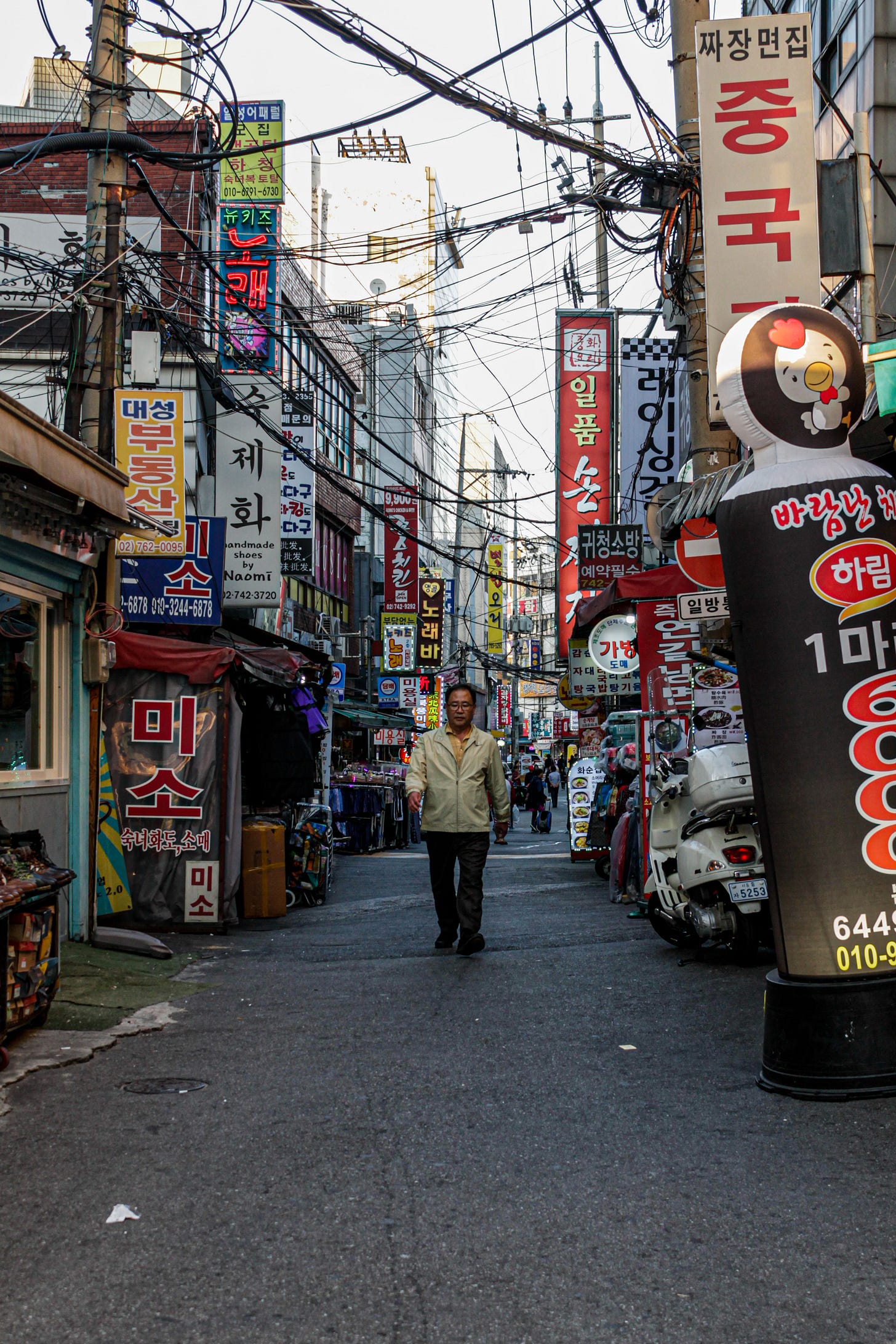





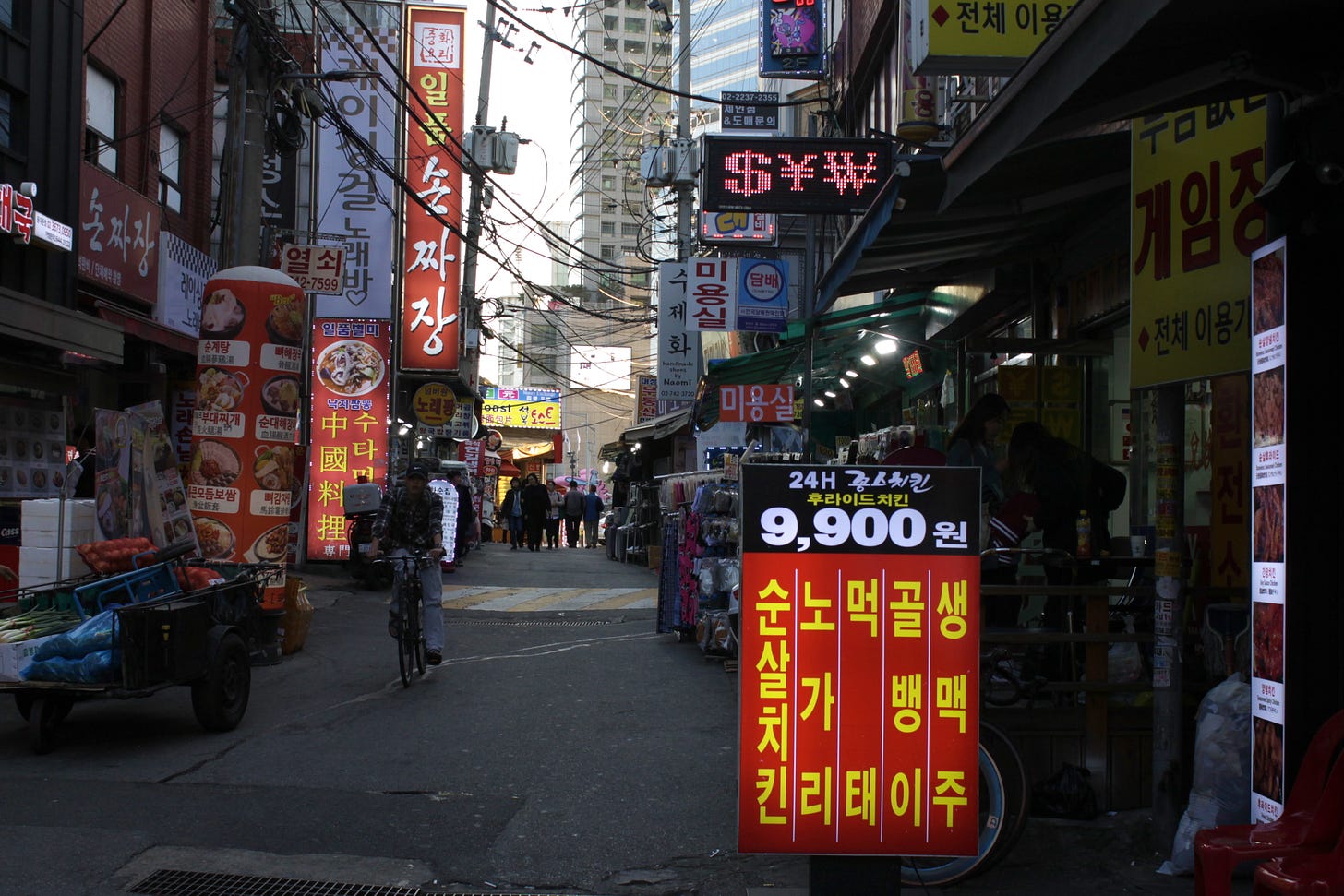
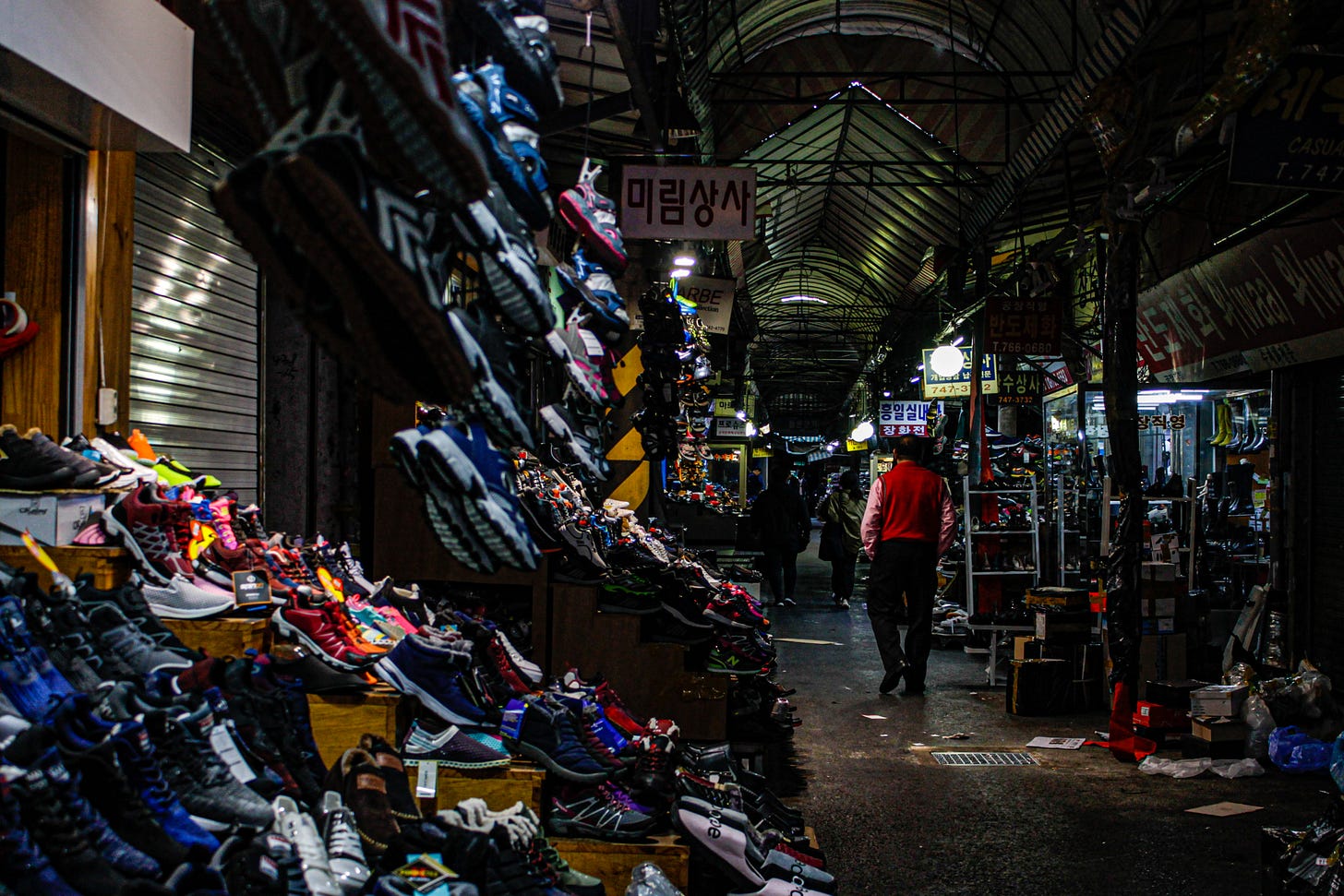








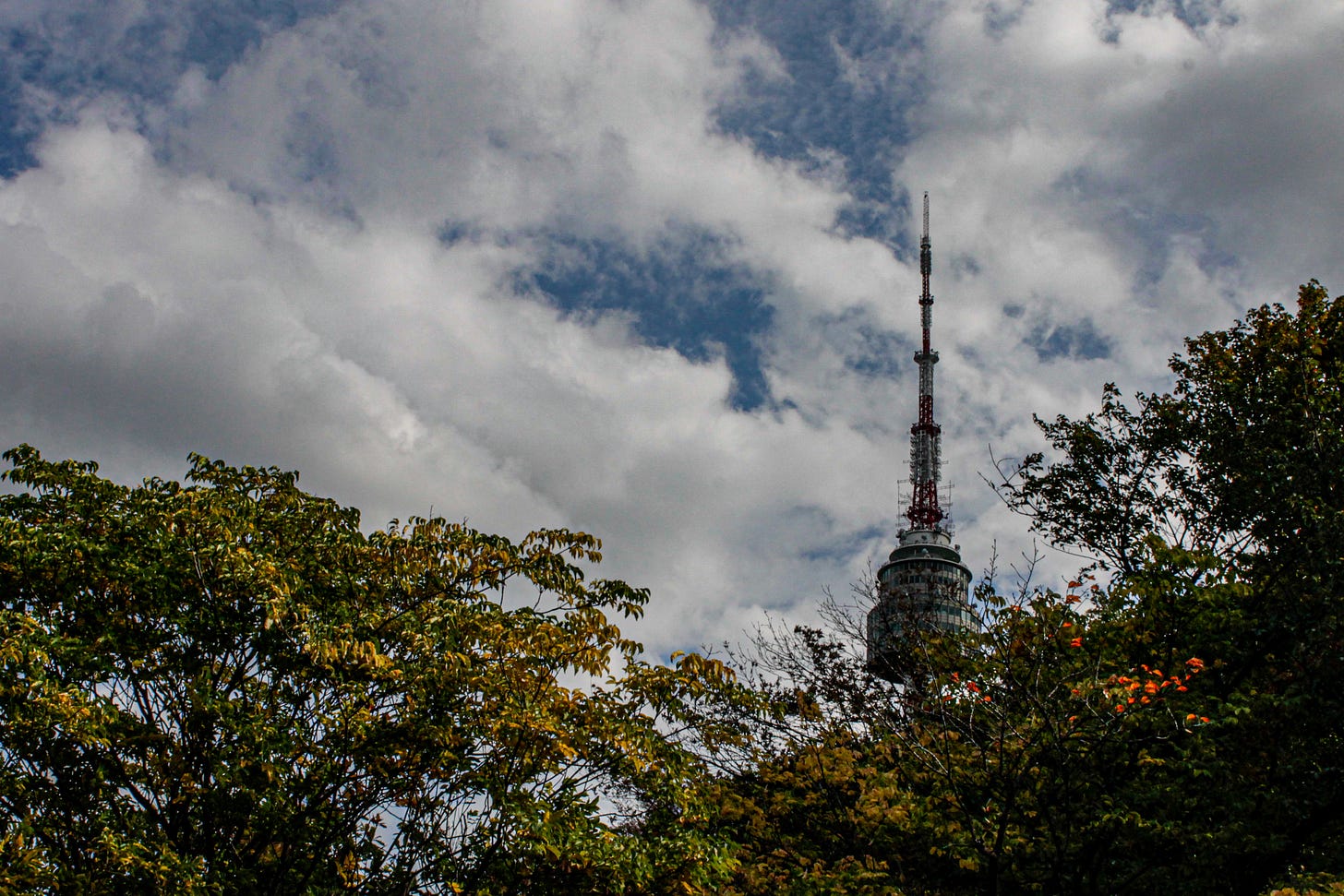




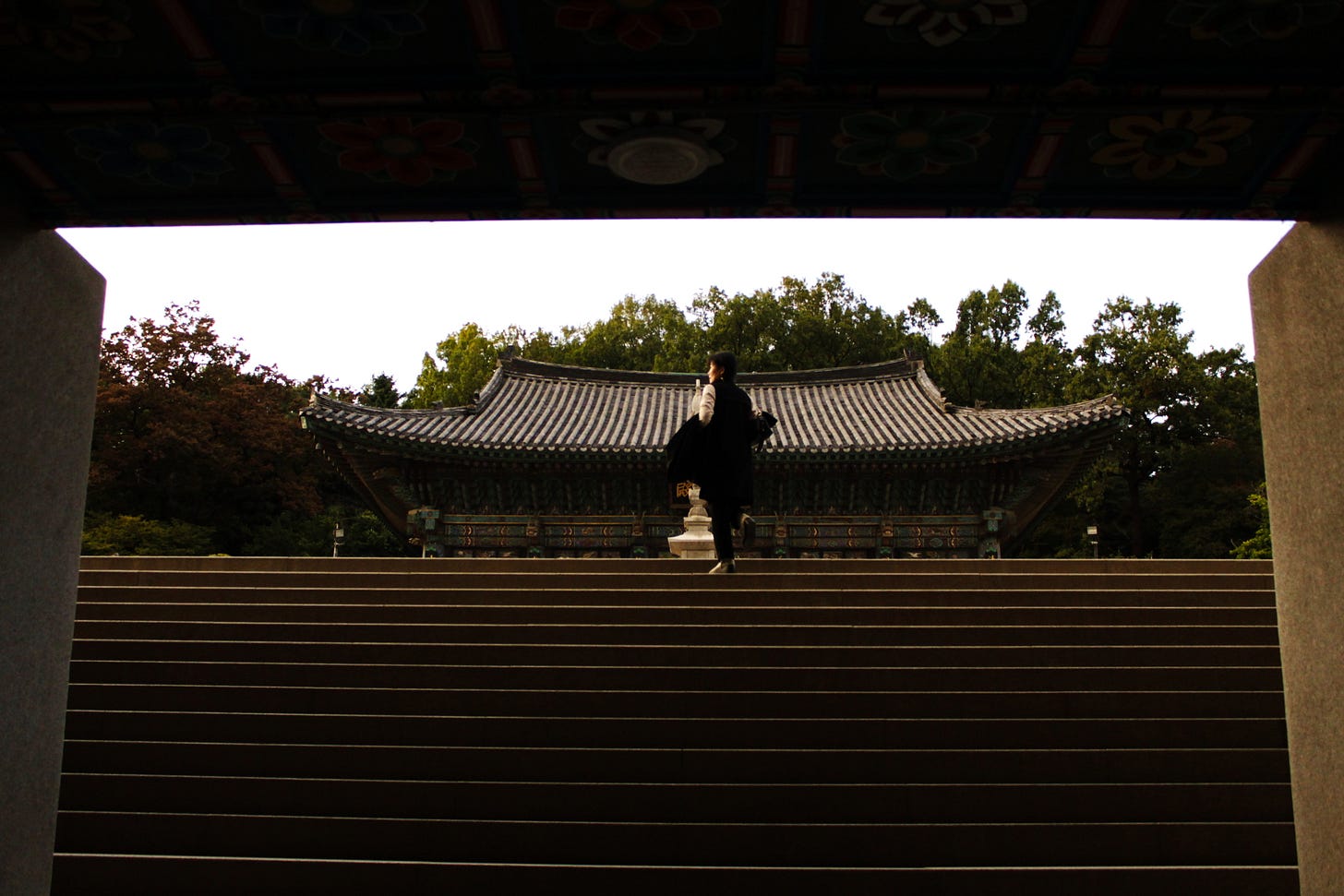

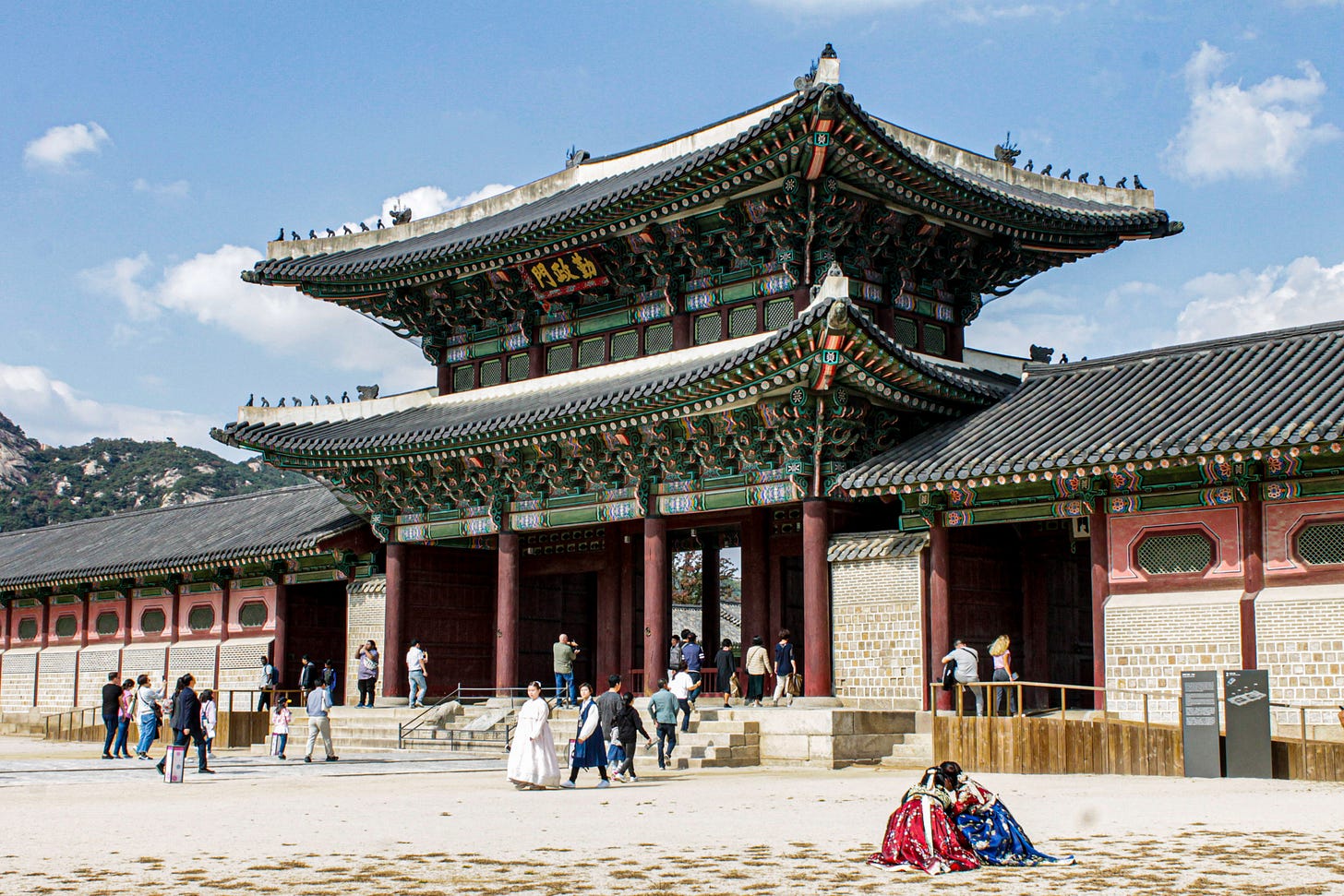







Wonderful photographs, sounds like a fascinating city, definitely adding it to my travel list! Japan is currently on the top so looking forward to the next one!
Devoured this post! Beautifully written with great photos to accompany the stories. You really took me back to the bustling streets of Seoul. It’s one of my favorite cities of all time and I don’t think I could ever get sick of it. Even though we’ve visited twice, you showed me several spots that we haven’t explored yet. Thanks for giving me many reasons to go back! - Hannah